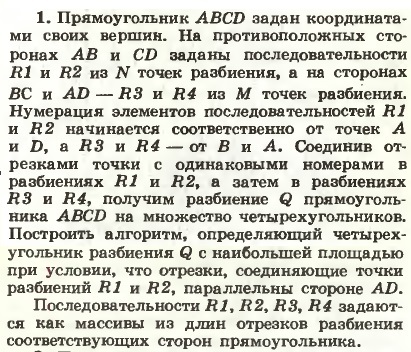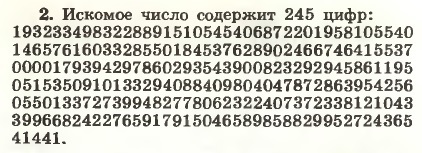First All-Russian Olympiad of Schoolchildren on Programming (Informatics) 1989
Dedicated to the memory of Ilya Zhiltsov
After meeting the Yandex camp with the guys from the Mytishchi school of programmers, I wondered how the first programming contests took place.
To begin, I wrote a post about the first All-Union, then began to look for information about the first All-Russian Olympiad and this search led me to one of the winners (second place) of this Olympiad - Daniel Alievsky ( http://algart.net ), he willingly shared with me personal photos, your memories and diary entries (will be in the next publication).
1988, April 13-20, in Sverdlovsk, the First All-Union Olympiad on programming for computer science (informatics)
1989, March 21-25 in Krasnoyarsk, the First All-Russian School Olympiad in Programming (Computer Science)
1989, May 15-20 in Bulgaria in the city of Pravets, the First International Olympiad of pupils in programming (computer science)

(from the personal archive of Daniel Alievsky, rewarding)
')
I cite the texts of the tasks of the First All-Russian Olympiad on programming for schoolchildren. They can be decided by themselves or given to Padawan students. (at the end of the publication, Daniel told how computer science / programming was learned in those years)
The First All-Russian Olympiad on Informatics for Schoolchildren, which was the republican stage of the All-Union Olympiad, took place from March 21 to March 25, 1989 in Krasnoyarsk. It was attended by 143 students from all regions of Russia. The organizers of the Olympiad were the Krasnoyarsk University, the Krasnoyarsk Pedagogical Institute, the Computing Center of the Siberian Branch of the USSR Academy of Sciences (Krasnoyarsk) and the Main Department of Public Education of the Krasnoyarsk Regional Executive Committee. The jury was headed by Yury I. Shokin, Corresponding Member of the USSR Academy of Sciences.
When checking the work, each task was first independently evaluated from 0 to 5 points. The criteria for evaluating the tasks of a theoretical tour were traditional; when evaluating the tasks of a practical tour, the highest score was set if an effective program was created that gave the correct result; 4 points received the one who has the program was less effective, but also gave the correct result; 3 points were given for an ineffective correct program that gives an incomplete result; 2 points were put for the correct program in the absence of a result; 1 point was given to those who, with the right algorithm, made mistakes in the program; zero score was set if the algorithm was incorrect. After checking all the tasks the jury derived the difficulty coefficient. The overall assessment of the work was equal to the sum of the product estimates for the problem by the corresponding difficulty coefficients.
Theoretical tour
On March 22, 4 tasks were proposed, 4 hours were allocated for their solution. In all the tasks, it was necessary to create an algorithm and write it in any algorithmic language.




Practical tour
On March 24, a practical tour took place, on which it was proposed to solve two problems using a personal computer for four hours. The participants were provided with personal computers such as Yamaha, Corvette and VK-0010 (BK-0010?). The official language of the practical tour was BASIC. Participants were not allowed to use their floppy disks.


Results of the participants
The winner of the first All-Russian Olympiad in Informatics for Schoolchildren was V. Belevtsev, the tenth-grader of secondary school No. 36 of the city of Obninsk, Moscow Region, who scored 120 points out of 175 possible. The second place was taken by D.Alievsky, the tenth-grader of the secondary school No. 36 of Sverdlovsk, and the third place - by M.Plakin, the tenth-grader of the secondary school No. 3 of the city of Kirov, who scored 114 and 112 points, respectively. According to the results of the Olympiad, a team of the RSFSR was formed to participate in the All-Union Olympiad, which included 22 students who showed the best results, as well as the winner of last year's All-Union Olympiad in Informatics, Ilya Zhiltsov, a student of secondary school No. 37 in Sverdlovsk.
answers



PS
- Daniel, how did you “become a programmer” at school and how did you study / learn in those times?
- We had a circle of programmers, who led the Radi Kadushnikov at the CPC UPI (there was a class "Robotron-1715"). A great person and my friend since those times. After the circle, we started programming with him on the IBM PC XT at the Institute of Chemistry, where he was listed as someone; it was a very "cool" computer, which seemed to cost 50,000 Soviet rubles (several Zhiguli cars). Almost immediately after graduation, all of us turned the circle into SIAMS, which is still alive, in which I was a co-founder and for which I work to this day: siams.com In addition, I have an older brother, a graduate of the VMC MSU, who brought his programming experience on large machines; He also taught me a lot, and for a few years at the end and right after school, we together developed DOS utilities. He is also a co-founder and full-time employee of SIAMS.
Ilya, however, studied elsewhere. And he did not join our company, despite our invitations — he chose the more difficult path of pure mathematics, which I lacked in ability.
(in the next post I will give the text of Daniel’s memories of how the Olympiad took place)
From the diary of the prize-winner of the first All-Russian Programming Olympiad for schoolchildren in 1989
Source: https://habr.com/ru/post/235909/
All Articles